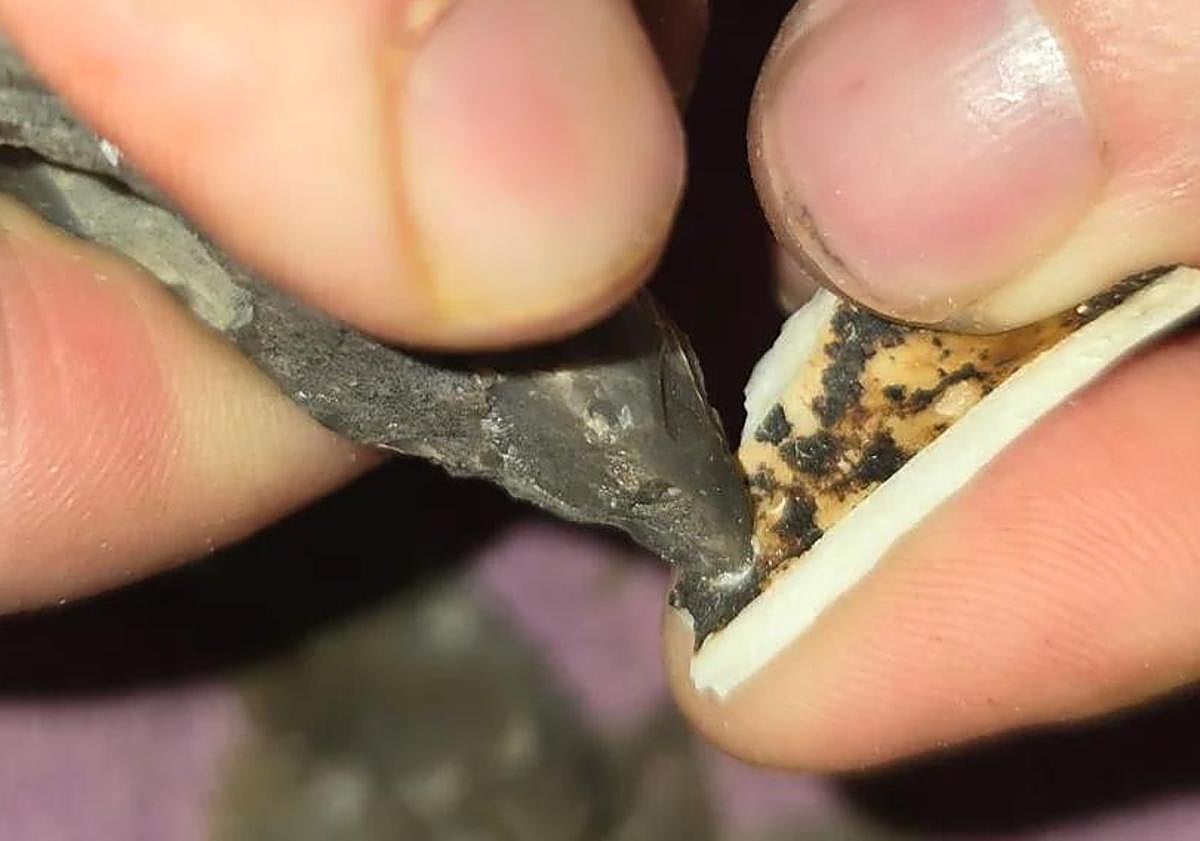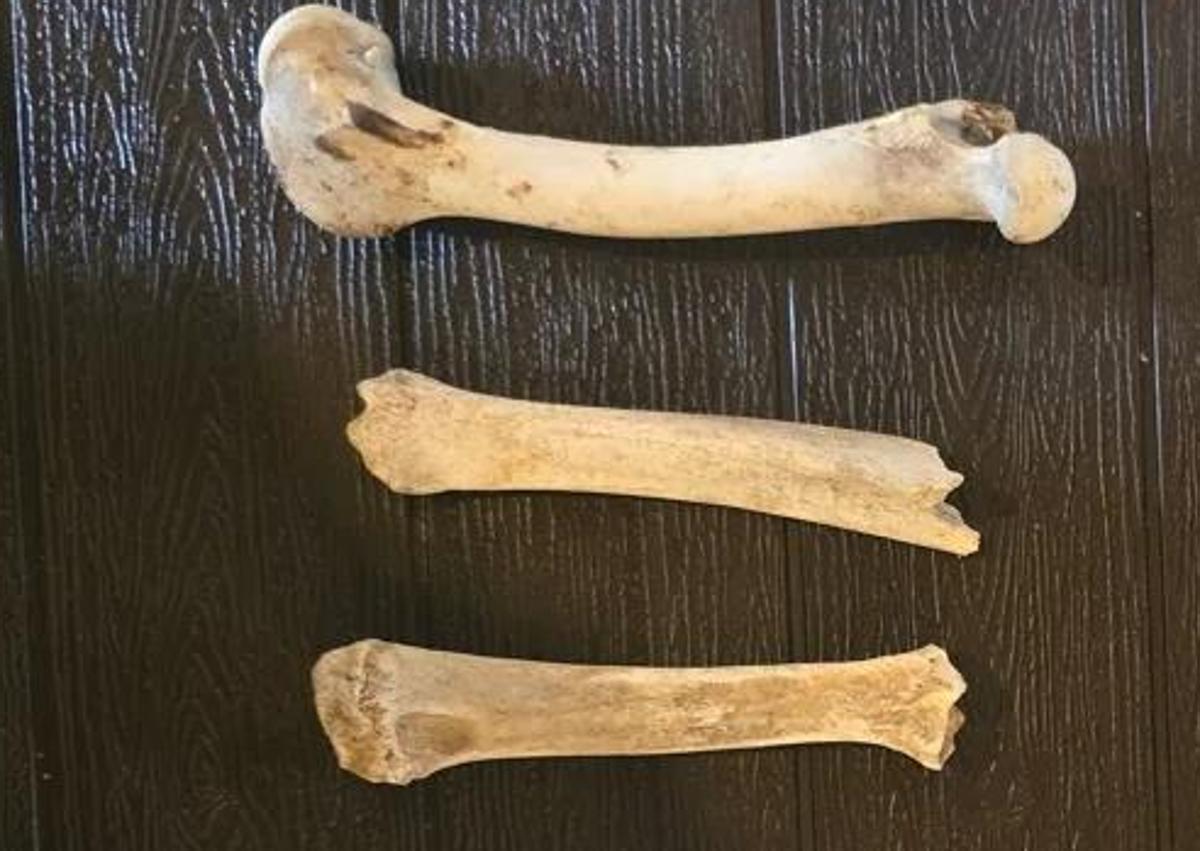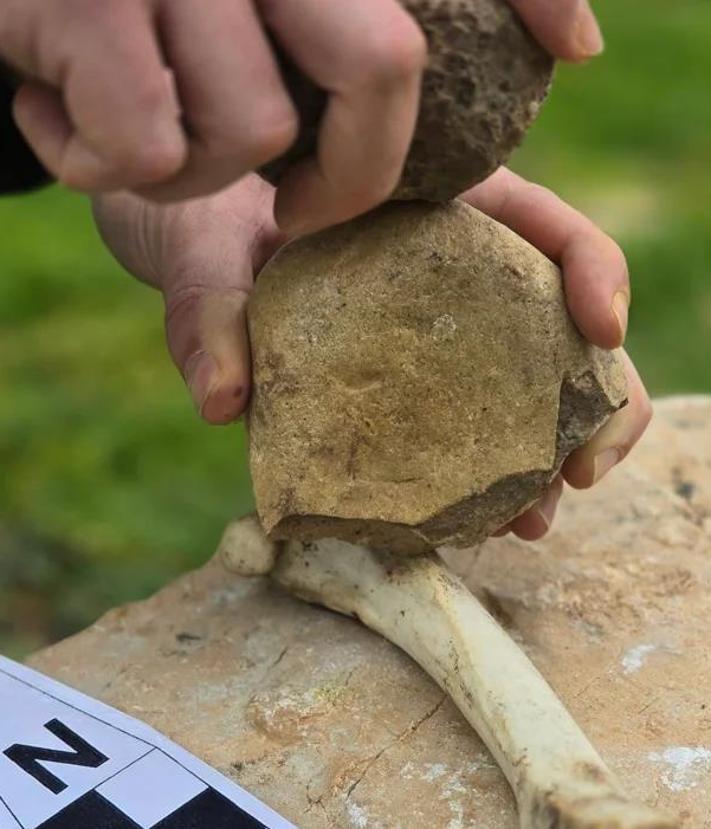

Sections
Highlight

Julio J. Portabales
Villanueva de la Concepción
Monday, 3 March 2025, 19:34
In a corner of Villanueva de la Concepción in the north of Malaga province, where the roots of history intertwine with everyday life, a unique project has taken place that sought to reconstruct the secrets of our ancestors. Miguel Subires Mérida, a graduate in archaeology, turned his hometown into an open-air laboratory where history comes to life. Through a weekend of experimental archaeology, he managed to bring together locals and experts in a collective effort to reproduce prehistoric tools with authentic methods, taking participants on a journey through time to understand how our ancestors shaped their tools with the resources of nature.
This project began 18 months ago when Mérida was working on a site in the south of the Pyrenees, and another found near the same area, in the Gulf of Lion, on the coast of France. In both cases, the study was carried out on how the ancient residents of these areas in the prehistoric period could make useful tools with bones, deer antlers, horns and teeth. “The problem is that studying this became complicated for me because stone tools have always been very well studied, but the bone industry has been largely overlooked in Spain and practically across Europe,” he explained.
Faced with this situation, the archaeologist, born in Villanueva de la Concepción, decided to undertake a trip to France, one of the places where this type of initiative is most studied. There he met a director of courses and seminars related to the bone industry and the manufacture of tools with bones and horns. It was she who gave him the idea of carrying out an experimental archaeology project that would allow a collection made in the project to be compared with the samples found on these sites.
After this, he decided that the place where this experiment would be carried out would be in his hometown: Villanueva de la Concepción. Although he explains that the reason for the location was because he "was born here", there was also another aspect that he took into account: the ease of managing the materials. "I should have done it in Paris or Tarragona, but it would have been more complicated to obtain deer or goat antlers, wild boar tusks or whole animal skeletons," he said.



With the help of the town hall and many prior analyses, the headquarters were established in a rural house so that people could stay and get to know the area. On the first day of the project, the procurement of raw materials took place, all of them gathered by the researchers themselves. Moreover, no modern tools or means were used. The goal was to make the simulation as close as possible to the habitat of Palaeolithic groups.
On the other hand, it was important to create a table with different variables that would allow the centralisation of the various groups. Among these were variables such as age, knowledge, individual experience, the time interval each person had dedicated to the tool, the energy invested, the result (an efficiency equation combining the energy and time invested, even dividing it by the result obtained), the person’s laterality (whether they are left- or right-handed), and the materials they were processing.
The material used has also had a significant impact on the research. Raw materials such as limestone, sandstone, shale, sand dust and water have been the most common used. "Thanks to these elements we have carried out different techniques such as drilling, filing, polishing, scraping, grooving and sawing," said Mérida, who added that other variables were also studied such as "angles, direction and movement."
All the marks from these hand-made tools will now be analysed under a microscope, but Mérida pointed out that the process is somewhat long and complex, so it is possible that the results of the test will not be known with certainty for another year.
Although he acknowledged that the project had been somewhat "chaotic" for him, he valued the common work of both the residents of Villanueva de la Concepción and those people from other parts of Spain. "The people of the town and from outside have responded very well. It just so happened that the project coincided with the town's carnival, and the people who came for the project integrated with all the local people," he said.
A local butcher's shop that offered fresh bones and some neighbours with private collections who donated elements such as deer antlers for the project were some examples of the collaboration that took place in the town with one main objective: to learn more about our ancestors in an environment as unique as that of Villanueva de la Concepción.
Publicidad
Publicidad
Publicidad
Publicidad
Esta funcionalidad es exclusiva para registrados.
Reporta un error en esta noticia

Debido a un error no hemos podido dar de alta tu suscripción.
Por favor, ponte en contacto con Atención al Cliente.

¡Bienvenido a SURINENGLISH!

Tu suscripción con Google se ha realizado correctamente, pero ya tenías otra suscripción activa en SURINENGLISH.
Déjanos tus datos y nos pondremos en contacto contigo para analizar tu caso

¡Tu suscripción con Google se ha realizado correctamente!
La compra se ha asociado al siguiente email
Comentar es una ventaja exclusiva para registrados
¿Ya eres registrado?
Inicia sesiónNecesitas ser suscriptor para poder votar.